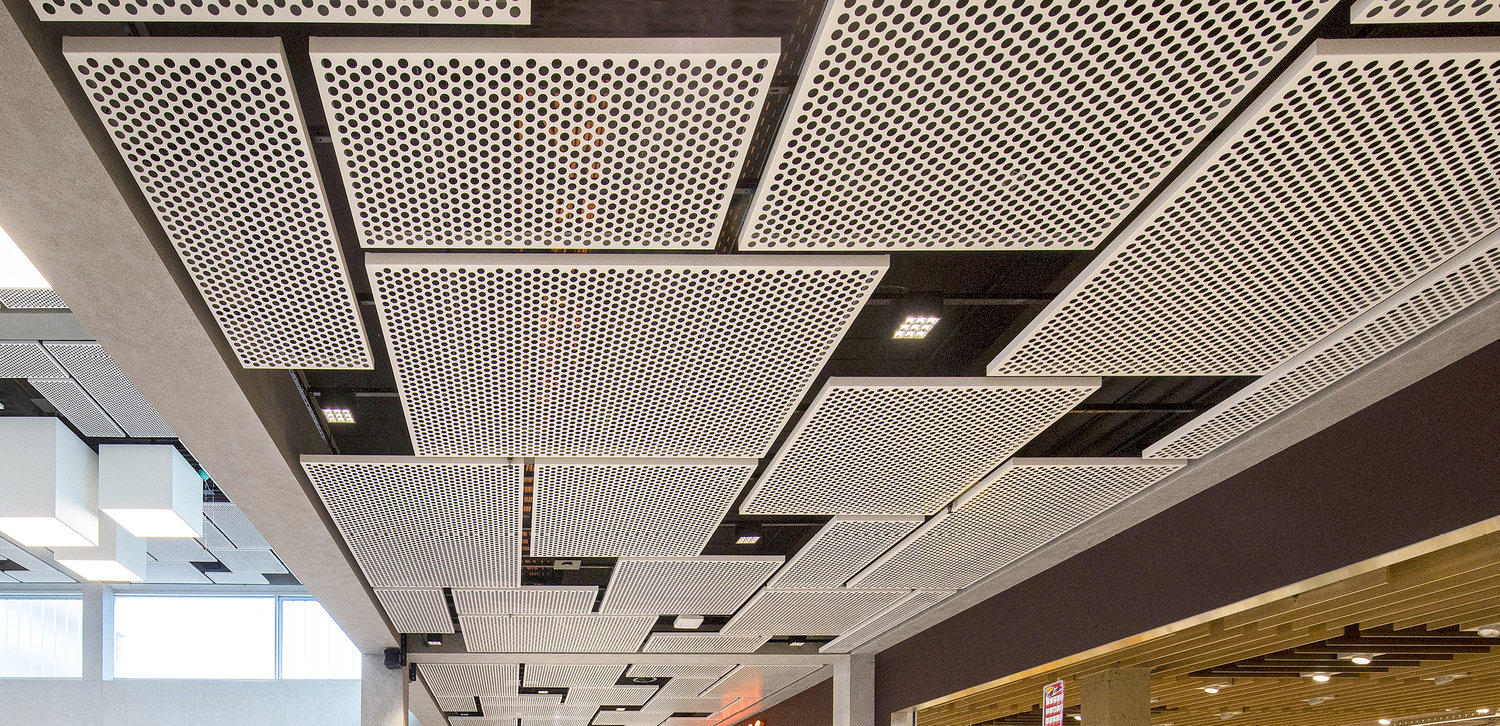PRANCE metalwork is a leading manufacturer of metal ceiling and facade systems.
Acoustic Ceiling Tiles: Stylish Soundproofing for Modern Interiors
Building a peaceful atmosphere throughout noisy urban spaces begins by controlling sound levels. The acoustic ceiling tile functions as a multipurpose product which provides both sound management benefits and decorative value. The engineered composition of these tiles creates sound reduction while enhancing interior appearances which makes them the preferred solution for residential and all types of commercial and institutional construction projects.
What Are Acoustic Ceiling Tiles?
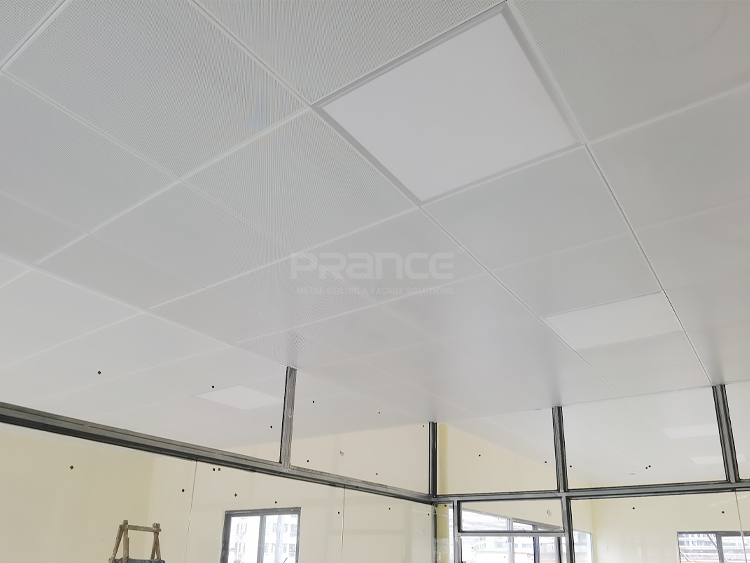
Acoustic ceiling tiles represent dedicated noise-absorbing products that eliminate echoes while enhancing room sound quality. Typically installed in a suspended ceiling grid, these tiles serve dual purposes: The tiles serve double duty by providing sound isolation and decorative design functions for interior spaces.
Soundproofing features serve as the core reason why acoustical ceiling tiles exist.
An environment with loud sounds generates performance disturbances and creates work breakdowns that compromise both worker efficiency and their personal comfort. Acoustic ceiling tiles resolve practical aesthetic issues because they generate peaceful, controlled surroundings that maintain design integrity.
What Are the Advantages of Acoustic Ceiling Tiles?
The fundamental properties of acoustical ceiling tiles include their sound-controlling attributes with their dual functionality of acoustical and visual value addition.
1. Noise Reduction
The production of acoustic ceiling tiles relies on noise-absorbing materials consisting of mineral fibre as well as fibreglass and foam. These specific materials absorb reverberations, thus improving both audio clarity and creating quiet spaces in buildings.
Science Behind Noise Reduction: The tiles' open cellular structure captures sound waves, which convert the received energy into heat while reducing reflected sound.
Read more: How Acoustic Panels Ceilings Enhance Soundproofing and Style?
2. Aesthetic Versatility
Traditional basic white ceiling tiles have become a thing of the past. Modern acoustic ceiling product lines now feature diverse options that let you choose from multiple textures, colours, and patterns to complement your interior decorating needs. Acoustic ceiling tiles offer decorative options which range between modern sleek designs and timeless classic styles to create elegant spaces.
Design Options to Explore: The latest modern interior design trends focus on tiles that implement metallic finishes or geometric patterns and textured embossing.
3. Durability
The design of acoustical ceiling tiles focuses on operational durability. The tiles demonstrate superior resistance against moisture and mould while remaining immune to sagging and ensuring their performance and appearance last throughout years in all conditions.
Maintenance-Free Benefits: These tiles become an affordable option after their installation due to their easy-going maintenance needs.
Benefits of Acoustic Ceiling Tiles
1. Enhanced Comfort in Residential Spaces
The inadequate noise reduction capacity of residences with solid surfaces creates challenges for sound control. Acoustic tiles lower sound movement through floors into other rooms, which produces a quieter environment.
2. Improved Productivity in Workspaces
Deloitte experts composed a report about how high noise levels within office environments negatively impact team productivity. The acoustic tiles in rooms produce better acoustic conditions, which help workers stay attentive to their work while working together.
3. Superior Acoustics for Public Spaces
Acoustical ceiling tiles improve the conditions inside theatres, classrooms, conference halls, and other public assembly spaces. These materials improve both voice clarity and audience understanding, thus enhancing the operation of the areas in question.
Materials Used in Acoustical Ceiling Tiles
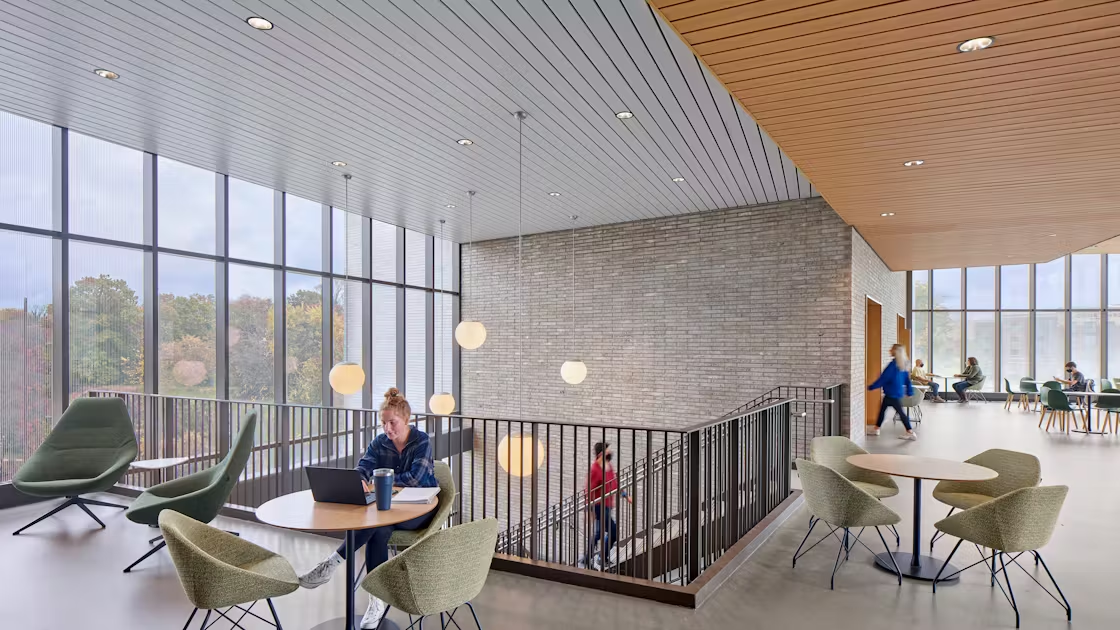
1. Mineral Fiber
Commercial facilities across the board rely on sound-absorbing mineral fibre tiles for their exceptional ability to mute noise. Lightweight nature and affordable price points, as well as diverse design options, are featured in these tile varieties.
2. Fiberglass
By providing superior sound absorption capabilities, fibreglass tiles reach high-performance standards, which makes them suitable for professional spaces such as recording studios or auditoriums. Acoustic tiles show durability alongside strong resistance to variations in humidity levels.
3. Foam
Acoustic tiles made of foam materials deliver affordability along with versatility in use. Acoustic ceiling tiles function best in small home theatres, gaming rooms, and office spaces.
Installation of Acoustic Ceiling Tiles

1. Preparing the Ceiling
The ceiling area must have a cleaned and flat surface before application. Pay attention to the grid alignment when using suspended ceiling systems since measurements need proper execution before tiles get installed.
2. Placing the Tiles
Secure acoustic ceiling tiles by placing them exactly into grid openings. You should cut tiles using scissors specifically to fit the space between obstacles, such as lighting fixture components and ventilation systems. A tight, even placement will create a clean, professional aesthetic.
3. Post-Installation Checks
Check how the tiles measure up in terms of alignment and stability level. Department personnel should measure the room's acoustic levels to validate that noise reduction objectives were attained during the installation.
Popular Applications of Acoustical Ceiling Panels
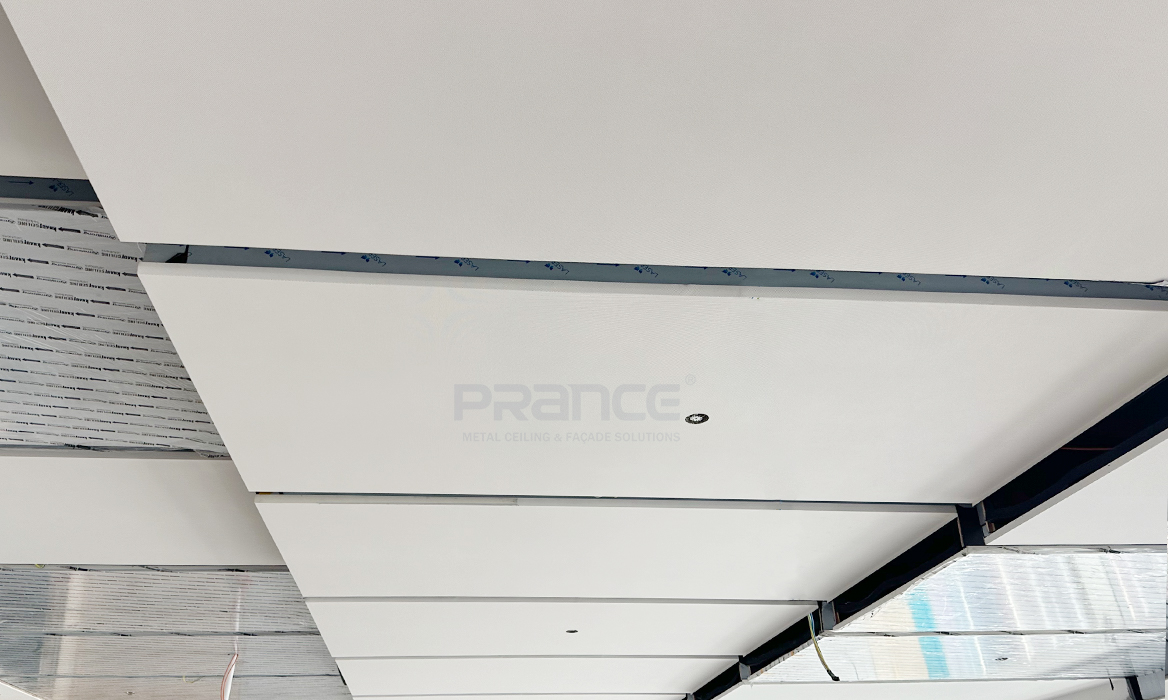
1. Homes
Acoustic tiles serve as effective noise reduction tools which produce sound-insulated bedrooms and silent living spaces while also delivering high-quality home theatre experiences. These tiles accomplish two functions by stopping outside noises while also stopping sounds from migrating between rooms.
2. Offices
Acoustic tiles deployed in conference areas along with open-work environments contribute to better work communication by reducing background disturbances and eliminating reflective noises.
3. Educational Institutions
Acoustic tiles installed in classrooms, together with libraries and lecture halls, enhance both speech clarity and provide a beneficial learning environment.
4. Hospitality and Retail
Acoustic ceiling tiles installed in hotels, restaurants, and retail establishments help customers enjoy a satisfying experience by lowering disruptive sounds.
Trends in Acoustic Tiles Ceiling for 2025
1. Eco-Friendly Materials
Sustainability stands at the forefront of priorities for 2025. Acoustic tiles produced from recycled materials combine environmental value preservation with effective soundproofing features.
2. Bold Colors and Patterns
Acoustic tiles experience increasing popularity as designers choose to leave behind monotonous designs. An increasing number of homes now feature acoustic tiles that combine custom design with bold colours and intricate patterns for unique and fashionable ceilings.
3. Integration with Smart Technology
Modern acoustic tiles link up with smart systems by featuring integrated LED lighting and temperature controls, which deliver both functionality and enhanced aesthetic appeal.
How to Choose the Right Acoustic Tiles for Ceiling
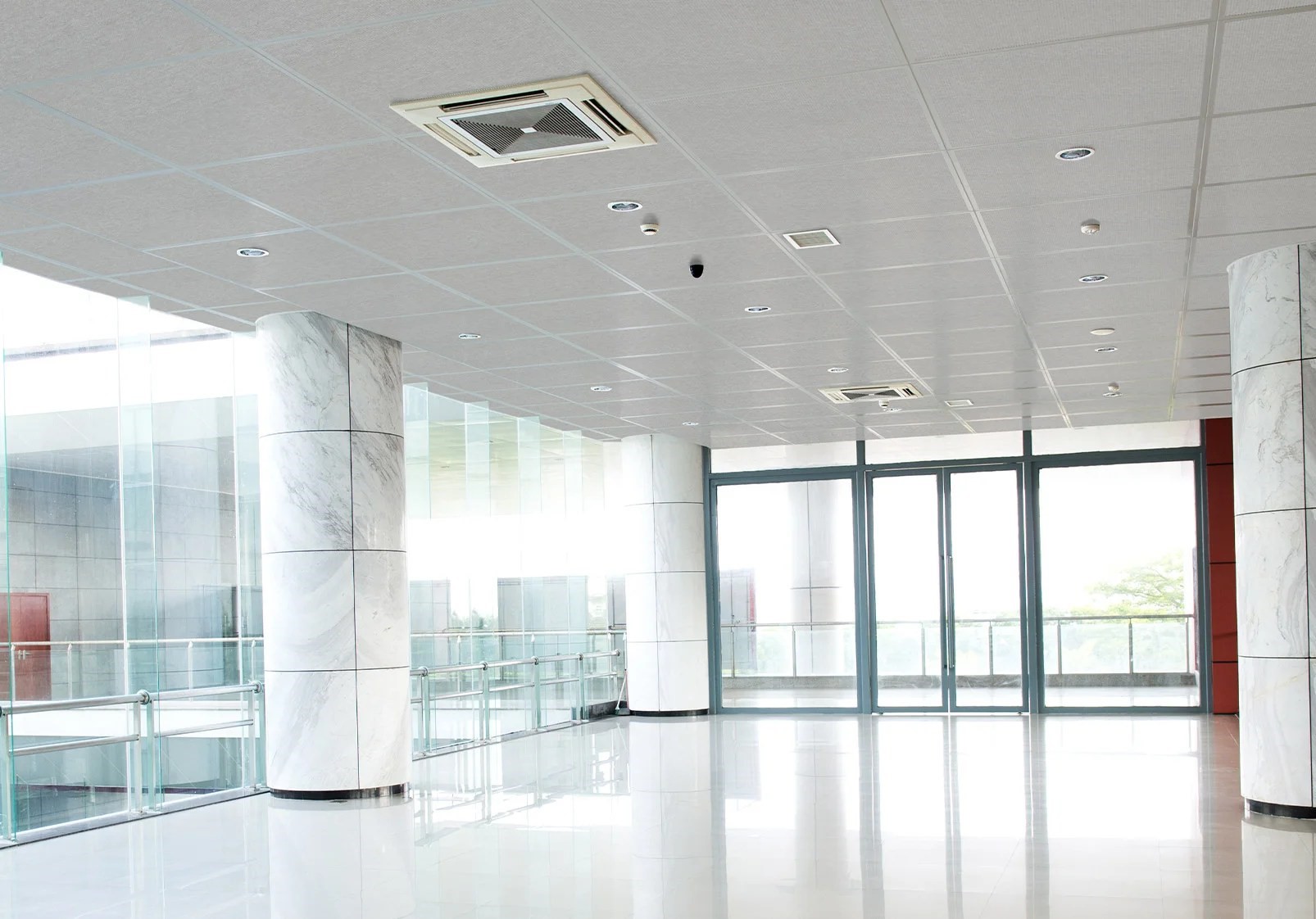
1. Assess Your Needs
Consider the room's purpose. The primary goal when designing a home theater system should be high-performing sound absorbing materials. When selecting tiles for office spaces, maintain equal importance between appearance quality and practicality requirements.
2. Budget Considerations
Acoustic tiles are offered across multiple pricing levels. Arrange your materials with design elements based on budget while ensuring no reduction in operational capability.
3. Consult Experts
An expert consultant will help you choose appropriate acoustic tiles which both meet your soundproofing requirements and create the design you desire.
Conclusion: Bringing Quiet Elegance to Modern Spaces
FAQs
1. What materials are best for acoustic panels for ceiling?
For high-performance acoustic ceilings, perforated aluminum panels with sound-absorbing backing designs are among the most effective materials. Unlike traditional mineral fiber or foam, aluminum acoustic ceiling panels offer enhanced durability, moisture resistance, and design flexibility.
2. Is it easy to install acoustic ceiling tiles?
Yes, aluminum acoustic ceiling tiles from are designed for ease of installation. These panels are lightweight yet sturdy and are compatible with suspended ceiling grids. Their modular design allows for quick mounting, making them ideal for both professional contractors and large-scale projects.
3. How do acoustical ceiling tiles absorb sound?
Aluminum acoustic ceiling tiles use perforations and acoustic backing to absorb sound. The perforations let sound waves pass through and get absorbed by mineral wool or fabric behind, helping to reduce echo and noise in commercial interiors. This design ensures both sound control and a modern aesthetic.
4. How to clean acoustic ceiling tiles?
5.How to remove acoustic drop ceiling tiles?
Removing aluminum acoustic ceiling tiles depends on their installation. For drop-in tiles, lift and tilt them out of the grid. For screw-fixed panels, unscrew the fasteners carefully. Always handle with care to preserve the backing layer. The process is clean and efficient.





















